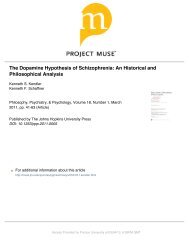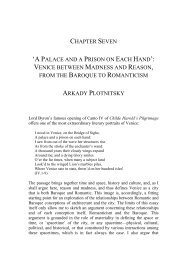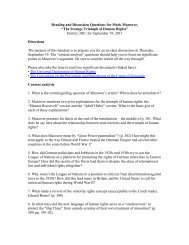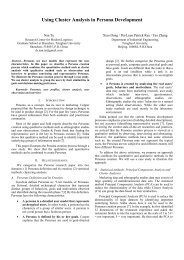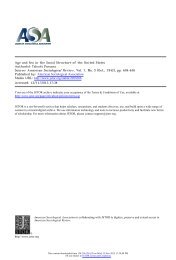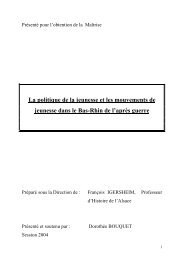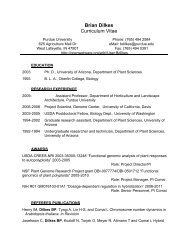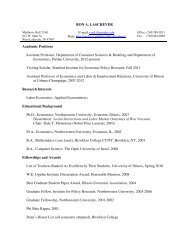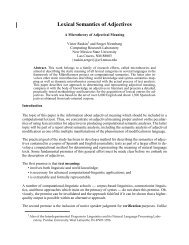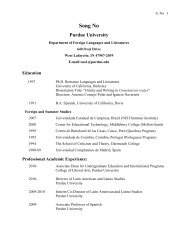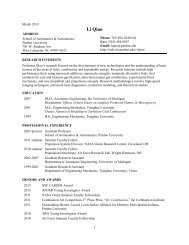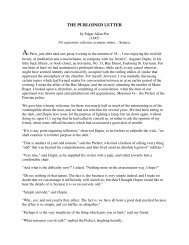Against the Yuck Factor - Career Account Web Pages - Purdue ...
Against the Yuck Factor - Career Account Web Pages - Purdue ...
Against the Yuck Factor - Career Account Web Pages - Purdue ...
Create successful ePaper yourself
Turn your PDF publications into a flip-book with our unique Google optimized e-Paper software.
12 Daniel Kelly and Nicolae Morar<br />
dramatically reduced activity. 22 An individual who becomes an object<br />
of disgust is difficult to conceive of and treat as fully human, and may<br />
even be denied status as a person. 23<br />
This evidence fits comfortably with <strong>the</strong> E&C view of <strong>the</strong> nature<br />
of disgust, which can also provide some illuminating context. Recall<br />
that according to <strong>the</strong> E&C view, though it easily gets pulled in social<br />
dynamics, disgust is not a typical ‘social’ emotion like, for instance,<br />
love, sympathy, envy or guilt. It did not originate in <strong>the</strong> face of adaptive<br />
problems connected to reciprocity, commitment or cooperation, or to<br />
help navigate Machiavellian social dynamics of defection and deceit.<br />
In light of this, it is not completely surprising that disgust is not<br />
as intrinsically attuned to social cues that carry information about<br />
motivation, intentionality and agency as those more typically social<br />
emotions. The E&C view depicts disgust as having evolved to deal<br />
with poisons and parasites, and when it was co-opted into <strong>the</strong> social<br />
domain it retained much of its original character. That character is<br />
evident not just in <strong>the</strong> emotion’s lack of sensitivity to agency-relevant<br />
cues, but also in <strong>the</strong> elements of <strong>the</strong> disgust response, whose core is<br />
relatively constant across different kinds of elicitors. The elements of<br />
<strong>the</strong> response – <strong>the</strong> gape face, <strong>the</strong> instinctive withdrawal, <strong>the</strong> motivation<br />
to avoid, <strong>the</strong> flash of nausea, <strong>the</strong> inferential signature that creates a<br />
sense of offensiveness and worries about contamination and taint –<br />
are activated by whatever triggers a genuine disgust response, be that<br />
refuse on a hot humid day, a vivid description of a grotesque murder,<br />
or <strong>the</strong> members of a particular out-group like <strong>the</strong> strident adherents of<br />
apoliticalideologyanti<strong>the</strong>ticaltoyourown.<br />
This illustrates ano<strong>the</strong>r way in which disgust dehumanizes, and so<br />
lends fur<strong>the</strong>r support to our scepticism that disgust is ever a laudable<br />
response to a transgression, or that it should be admissible as a<br />
social tool. Disgust does indeed provide strong avoidance motivation,<br />
and can infuse moral condemnation with a singular kind of vividness<br />
and urgency. However, <strong>the</strong>se potential virtues are not sold separately<br />
from <strong>the</strong> rest of <strong>the</strong> elements of <strong>the</strong> response. Disgust, by its very<br />
nature, inevitably brings o<strong>the</strong>r psychological components to bear as<br />
well: <strong>the</strong> propensity to project contamination, pollution, taint and<br />
dirtiness. As noted above, many of <strong>the</strong>se features of <strong>the</strong> response are<br />
22 L. T. Harris and S. T. Fiske, ‘Dehumanizing <strong>the</strong> Lowest of <strong>the</strong> Low: Neuro-imaging<br />
Responses to Extreme Out-groups’, Psychological Science 14 (2006), pp. 847–53 and L. T.<br />
Harris and S. T. Fiske, ‘Social Groups that Elicit Disgust are Differentially Processed in<br />
MPFC’, Scan 2(2007),pp.45–51.<br />
23 Adding to <strong>the</strong> worries about <strong>the</strong> dehumanizing stigma associated with disgust is that<br />
<strong>the</strong> emotion has been connected to dogmatism, see e.g. P. Russell and R. Giner-Sorolla,<br />
‘Social Justifications for Moral Emotions: When Reasons for Disgust are Less Elaborated<br />
than for Anger’, Emotion 11 (2011), pp. 637–46.



